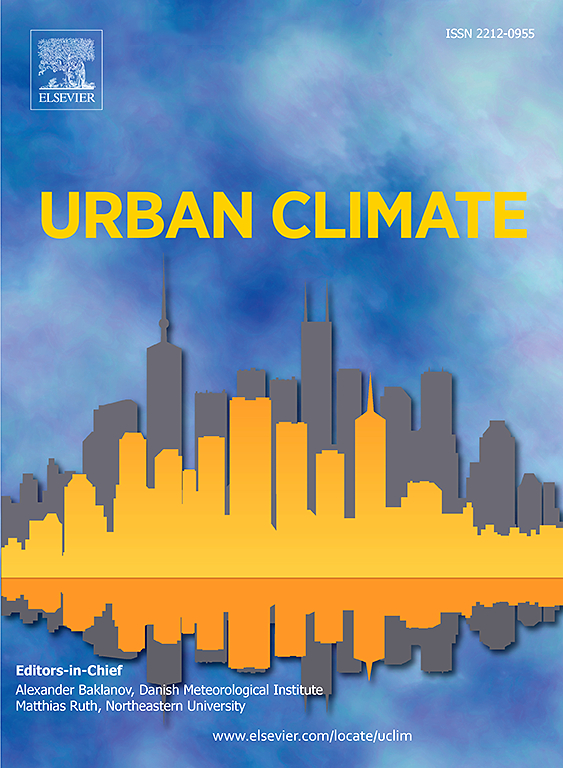Contributions of temperature and humidity to intra-city variations in humid heat
IF 6
2区 工程技术
Q1 ENVIRONMENTAL SCIENCES
引用次数: 0
Abstract
In this study, we investigated the intracity variation of humid heat in consideration of the contributions from temperature and humidity. Data were collected from mobile surveys in a mid-latitude industrial city. We found greater humid heat in built-up neighborhoods than in rural neighborhoods. Land surface temperature exaggerates the disparity in heat exposure as opposed to air temperature, although their spatial variations bear a strong resemblance. Humid heat is more variable across the city at night than during the day. Its nighttime variation is stronger in the cold season than in the warm season. Weather exerts a strong influence on the spatial variation in humid heat. The greatest variation was observed in the conditions of weak wind, low solar radiation, and high soil moisture in the day, and in the weak-wind and dry-soil conditions at night. The daytime humid heat increases in the built-up neighborhoods because these neighborhoods dissipate surface moist static energy less efficiently than the rural neighborhoods. The nighttime humid heat varies within the city mainly because the release of heat stored in the built-up neighborhoods is at a higher rate than the heat release from the rural soil.
温度和湿度对城市内湿热变化的影响
在这项研究中,我们考虑到温度和湿度的贡献,对城市内湿热的变化进行了调查。数据是在一个中纬度工业城市通过流动调查收集的。我们发现,建筑密集区的湿热程度高于农村地区。与气温相比,地表温度夸大了受热程度的差异,尽管它们的空间变化非常相似。与白天相比,整个城市夜间的湿热变化更大。在寒冷季节,夜间湿热的变化比温暖季节更大。天气对湿热的空间变化影响很大。白天风力小、太阳辐射低、土壤湿度大,夜间风力小、土壤干燥,这些条件下的湿热变化最大。建筑密集区的白天湿热增加,因为这些居民区消散地表湿静态能量的效率低于农村居民区。城市中的夜间湿热之所以不同,主要是因为建筑密集区储存的热量释放速度高于农村土壤的热量释放速度。
本文章由计算机程序翻译,如有差异,请以英文原文为准。
求助全文
约1分钟内获得全文
求助全文
来源期刊

Urban Climate
Social Sciences-Urban Studies
CiteScore
9.70
自引率
9.40%
发文量
286
期刊介绍:
Urban Climate serves the scientific and decision making communities with the publication of research on theory, science and applications relevant to understanding urban climatic conditions and change in relation to their geography and to demographic, socioeconomic, institutional, technological and environmental dynamics and global change. Targeted towards both disciplinary and interdisciplinary audiences, this journal publishes original research papers, comprehensive review articles, book reviews, and short communications on topics including, but not limited to, the following:
Urban meteorology and climate[...]
Urban environmental pollution[...]
Adaptation to global change[...]
Urban economic and social issues[...]
Research Approaches[...]
 求助内容:
求助内容: 应助结果提醒方式:
应助结果提醒方式:


